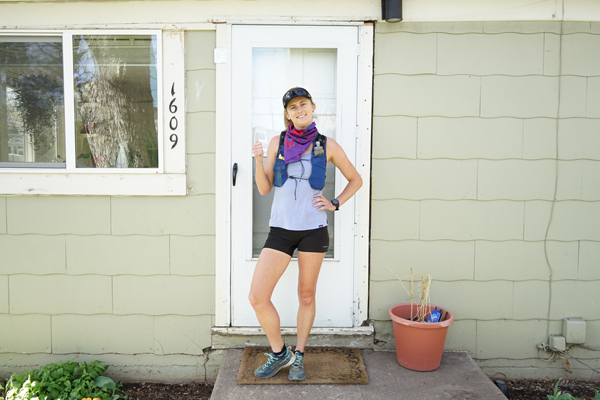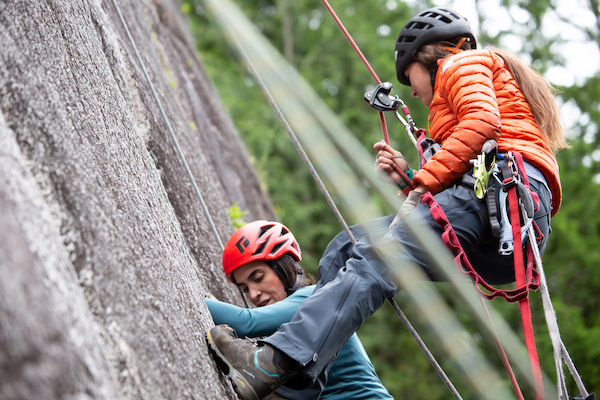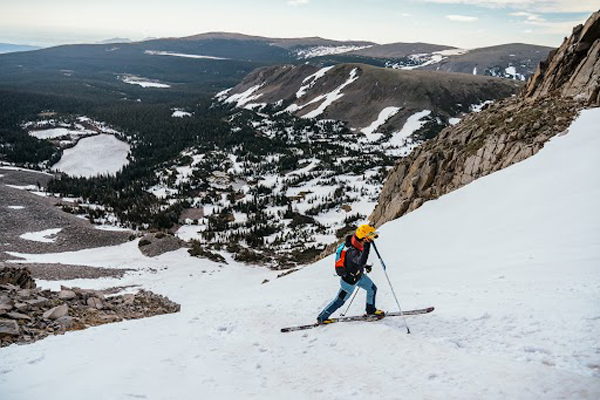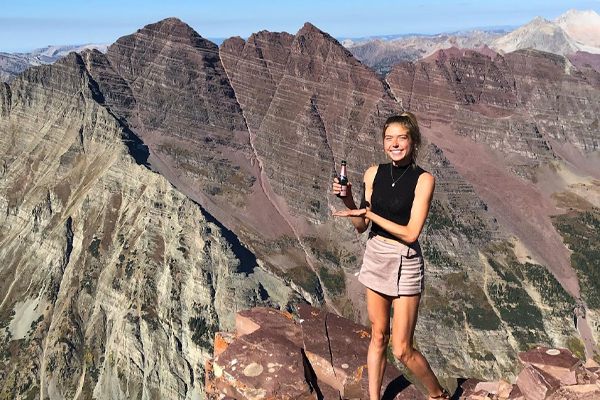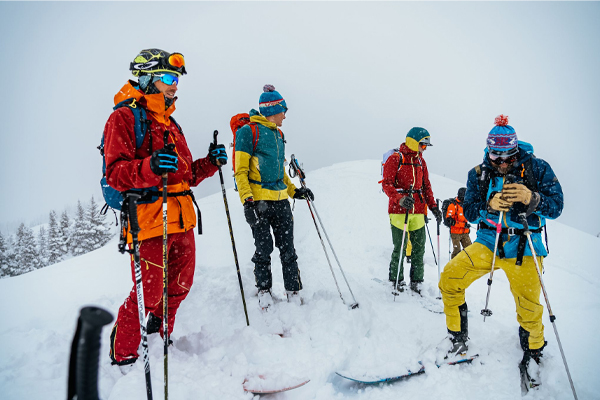Foot Care for Long Distance Hikes
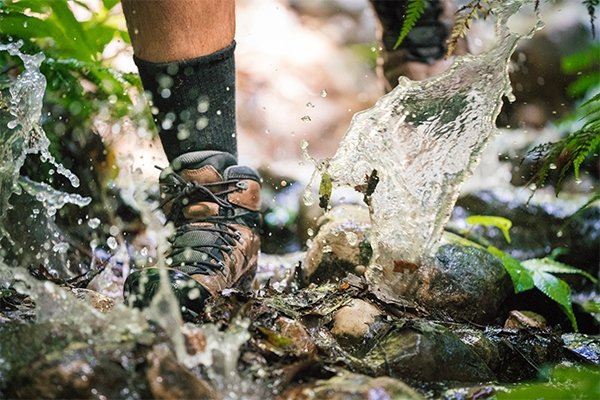
From weekend backpacking trips, to thru-hiking epics, read these tips to keep your feet feeling fresh.
- - -
As the opening scene of the movie Wild flashed across the screen, you could tell there were hikers in the audience. As the main character loses her boot over the edge of a cliff in the remote wilderness, sympathy groans filled with the knowing misery of what was in store for this heroine echoed through the audience. Foot care is, arguably, the most important aspect of planning a long distance trek.
While it might be impossible to keep your feet entirely fresh over days or weeks on the trail, there are a number of ways to minimize the misery and keep the joy in the jaunt. Footcare expert and author of Fixing Your Feet, John Vonhof says, "you'll enjoy hiking more and have more success when you make smart choices in footwear and educate yourself in foot care techniques."
If the Boot Fits
Above all, ensure the boot you choose is comfortable and fits well. You’ll be wearing these bad boys for miles, days, and maybe even weeks or months, so try on several pairs before making your choice. There are low-cut hiking shoes, mid- to high-cut boots, and backpacking boots that go above the ankle. Look for a boot that has appropriate lugs on the sole for traction, ankle protection that allows mobility while providing stability, and (depending on terrain) is waterproof. The La Sportiva Nucleo High GTX checks all of those boxes (available in men’s and women’s models). Additionally, the Nucleo features Gore-Tex Surround Technology, which has all the benefits of waterproof protection, while remaining breathable (read: no more clammy, wet feet). Moisture on skin is a major source of blisters but Gore-tex Surround Technology provides a waterproof boot without compromising breathability.
Wear your hiking socks when trying on boots. It’s recommended to get your hiking boots one-half to a full size larger than your regular shoe size to ensure there is some space between your toes and the front of the boot. Space not only accounts for inevitable swelling, but also gives your toes extra room for movement during descents- so they don’t smash into the front of your shoes going downhill.
Aftering picking up a new pair of boots, break them in on shorter hikes to make sure the fit is dialed before heading out for a longer trek. Don't get stuck with a pair of boots that are too narrow, too tight, or too big. At the very least, hike around the block, backyard, or even house to get used to your new shoes.

The Importance of Insoles
Most hikers know the importance of boot and shoe fit, but replaceable insoles often get overlooked. Often the ones that come standard in shoes can’t stand up to hundreds of hard miles of daily use and can compress quickly. "Alternative insoles can relieve pressure points, reduce blister and foot irritations, and make your feet comfortable again," says Vonhof.
Using insoles is a general tip for all hikers. However, if you have specific foot issues look for products targeted at those ailments, like plantar fasciitis and metatarsalgia.
How Do You Lace Your Boots?
There are a variety of methods for lacing up that can help minimize rub while giving foot support to help you feel better for longer. Anything that gets you through those last few miles of a long day is worth experimenting with. Learn what your options are, give them a test run, and then be more deliberate about your lacing on longer hikes.

Choose Your Socks Carefully
Almost as important as the boots you use are the socks you wear underneath. When shopping for socks, personal preference dictates details like thickness, material and whether or not to use liners. What's not negotiable is a choosing high-quality material like merino wool or a moisture-wicking synthetic; both textiles provide cushion, while helping cool your feet. Smartwool and Darn Tough are two great options.
Quality isn’t cheap but is worth the extra spend in the long run; quality socks won't wear out before your trip is over, and will trap odors more effectively (reducing smell) even after days of hard hiking. Always pack extras to have a dry pair at the ready. Consider changing them in the middle of the day to keep your feet as fresh as possible. Remove your socks at camp to air out your feet for awhile and then switch to another dry pair for bed.
Be Proactive
Tackle the threat of hot spots before a real problem develops. Consider using a quality lubricant to reduce friction, or conversely, try an absorbent powder to keep your feet drier.
Many hikers swear by taping up the problem areas before beginning the day's trek. Use a good athletic tape, moleskin, or the multi-tool of the world, duct tape—which is actually preferred by many. Forgo the blister patch unless it’s going to be taped into place, and always clean the area well before taping up.
Round out your foot care plan by carrying a small blister kit with extras for emergencies and contingencies. Vonhof suggests that it "contain your choice of lubricant or powder, a few alcohol wipes to clean lubricant off the skin, a few tincture of benzoin wipes to help the patch stick to your skin, several blister patches of your choice, a least a yard of duct tape wrapped around a small pencil, and a safety pin to drain blisters."
Keep Your Feet Clean
Having clean feet goes a long way in preventing blisters. Wearing gaiters can aid in keeping debris from getting into your shoes, particularly with an ultra breathable hiking boot—you’re still going to get dirty but gaiters can help mitigate the degree. Another pro tip from Vonhof: take your shoes off whenever you stop to rest. Air your feet out, cool them down (in cold water if available), clean and dry them off. You’ll be glad you did.
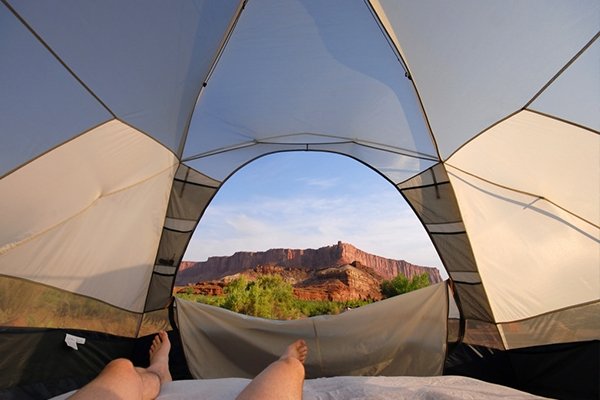
Get Started on the Right Foot
A lot of time goes into preparing for a big thru-hiking trip. During the preparation stage, tending to your toes and feet will go a long way toward blister and issue prevention. Avoid ingrown toenails with proper trimming: don’t cut them too short and do trim straight across. If you are already dealing with an ingrown toenail, put in some effort prior to your trip to fix it by cutting the skin away gently and using a tiny bit of cotton to separate the nail from skin, which allows the nail to grow out properly.
Thick calluses may seem like armor against blisters, but can often wreak havoc instead. File down calluses regularly and if you have cracked heels or toes, exfoliate and rub in a good quality foot cream nightly until your skin has no breaks. This will make them more blister resistant.
Hot, wet conditions inside hiking boots are the perfect environment for fungus to bloom. Bring along some anti-fungal powder or cream to ward off bacteria growth and combat the spread.
Pay Attention to Your Circulation
Swelling of the feet and legs is a well-known and often discussed topic for thru-hikers. Today, many advocate for the use of compression socks or sleeves, either during part of the day's hike, or, later at camp for recovery. If swelling has been an issue for you, experiment with some compression for relief.
In addition, there are a number of benefits to massaging your feet and legs at the end of the day; reduced swelling and increased circulation, not to mention, it feels terrific. There is even some evidence suggesting that a good foot rub before turning in can help you catch those much needed Zzz’s.
If You Do Get a Blister
There are several techniques for draining blisters, that include safety pin pricks and piercing blisters with a needle and drawing thread through to promote draining. Depending on the size of your blister, pin pricks can be too small for all of the fluid to escape and may heal over too quickly. In this case, use the pin to make a larger hole, or use a pair of nail clippers to make a slit. Still, avoid creating a hole so big that the top layer of skin comes off. This flap is essential for protecting the blister and new skin beneath during the healing process.
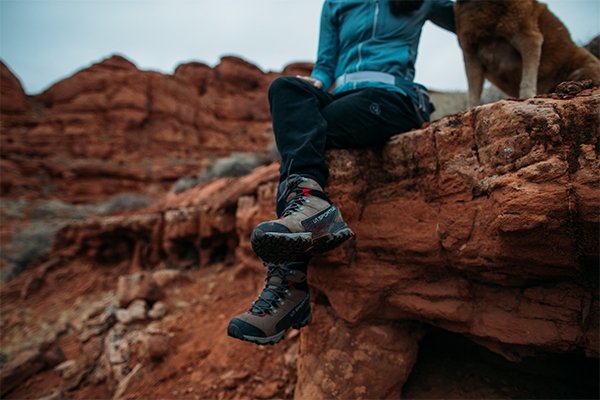
One Last Piece of Advice
"The trick is to play with all the variables to find what works best for your feet," says Vonhof. A little advance preparation, on-trail vigilance and a few extra ounces of supplies, can make all the difference between having the time of your life or a walking nightmare.
Photos in order of appearance: ©Scott Jackson (preview & photo 1), ©Shannon McGee, ©Rob Lee, ©Aly Niklas
Originally written by RootsRated for La Sportiva.



